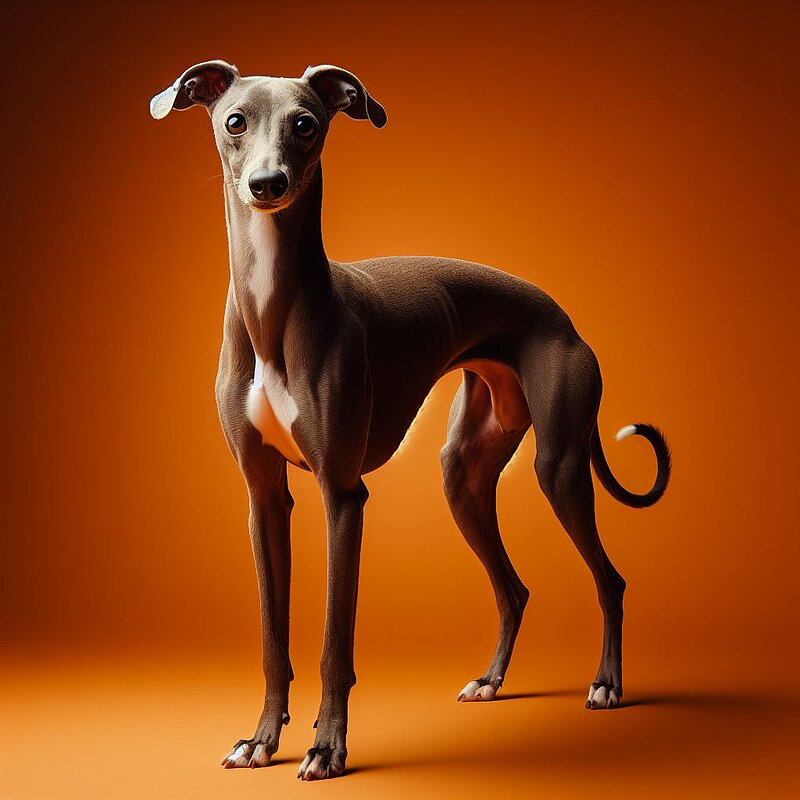The Italian Greyhound: the elegant whirlwind
Historical background
The history of the Italian Greyhound goes way back to the time of the ancient Egyptians and Romans. Images of these graceful dogs can be found on ancient works of art and in tomb paintings. Over the centuries, they became the favorites of European nobility, especially in Italy, where they got their current name. Their popularity in aristocratic circles also explains their presence in many Renaissance paintings, where they were often depicted alongside kings and queens.
Who is the Italian Greyhound suitable for?
The Italian Greyhound is particularly suitable for people who are looking for a close bond with their dog and are willing to invest time and attention. They are ideal for individuals, couples or families with older children who understand and respect the fragility and sensitivity of this breed. Due to their petite body and sensitive nature, they are less suitable for households with very young children or large, boisterous dogs.
Character and nature
Italian Greyhounds are known for their gentle and loving nature. They are very affectionate and prefer to be close to their humans. These dogs are intelligent and curious, which makes them good companions. However, they can also be shy and reserved around strangers, which is why early socialization is important.
Appearance
The Italian Greyhound is a small, petite dog with a slender, well-proportioned body. They have a fine, smooth coat texture that can come in a variety of colors such as black, gray, blue, slate gray, red or cream. Their eyes are large and expressive, and they have long, thin legs that give them their characteristic graceful appearance.
Care and health
Despite their elegant appearance, grooming an Italian Greyhound is relatively straightforward. Their short coat only requires occasional brushing to keep it clean and shiny. The breed is prone to dental problems, so regular brushing should be part of the grooming routine. Italian Greyhounds are also prone to broken bones due to their fine bone structure, so falls and rough play should be avoided.
Size and weight
Adult Italian Greyhounds reach a shoulder height of around 32 to 38 cm and weigh between 3.6 and 5 kg. Their petite stature makes them ideal for apartment living as long as they get enough exercise and mental stimulation.
Exercise requirements and city suitability
Although these small sighthounds are full of energy, they do not require an excessive amount of exercise. Regular walks and playtime are enough to keep them happy and healthy. Their size and calm nature make them well suited to city life, provided they have enough opportunity to release their energy in safe, fenced-in areas.
Training tips
The Italian Greyhound is intelligent and eager to learn, but also sensitive. Positive reinforcement and gentle training methods are the key to success. They respond well to praise and rewards and should never be trained using harsh methods as this can affect their sensitive nature.
Behavioral characteristics and interactions
Italian Greyhounds are social animals that enjoy the company of people and other dogs. They get along well with children if they learn to be respectful and gentle with them. However, they can be a little shy with strangers and new situations, so good socialization from puppyhood is important.
FCI recognition
The Italian Greyhound is recognized by the Fédération Cynologique Internationale (FCI) and is listed in Group 10 (Sighthounds). This recognition underlines its importance and status among the recognized dog breeds worldwide.
